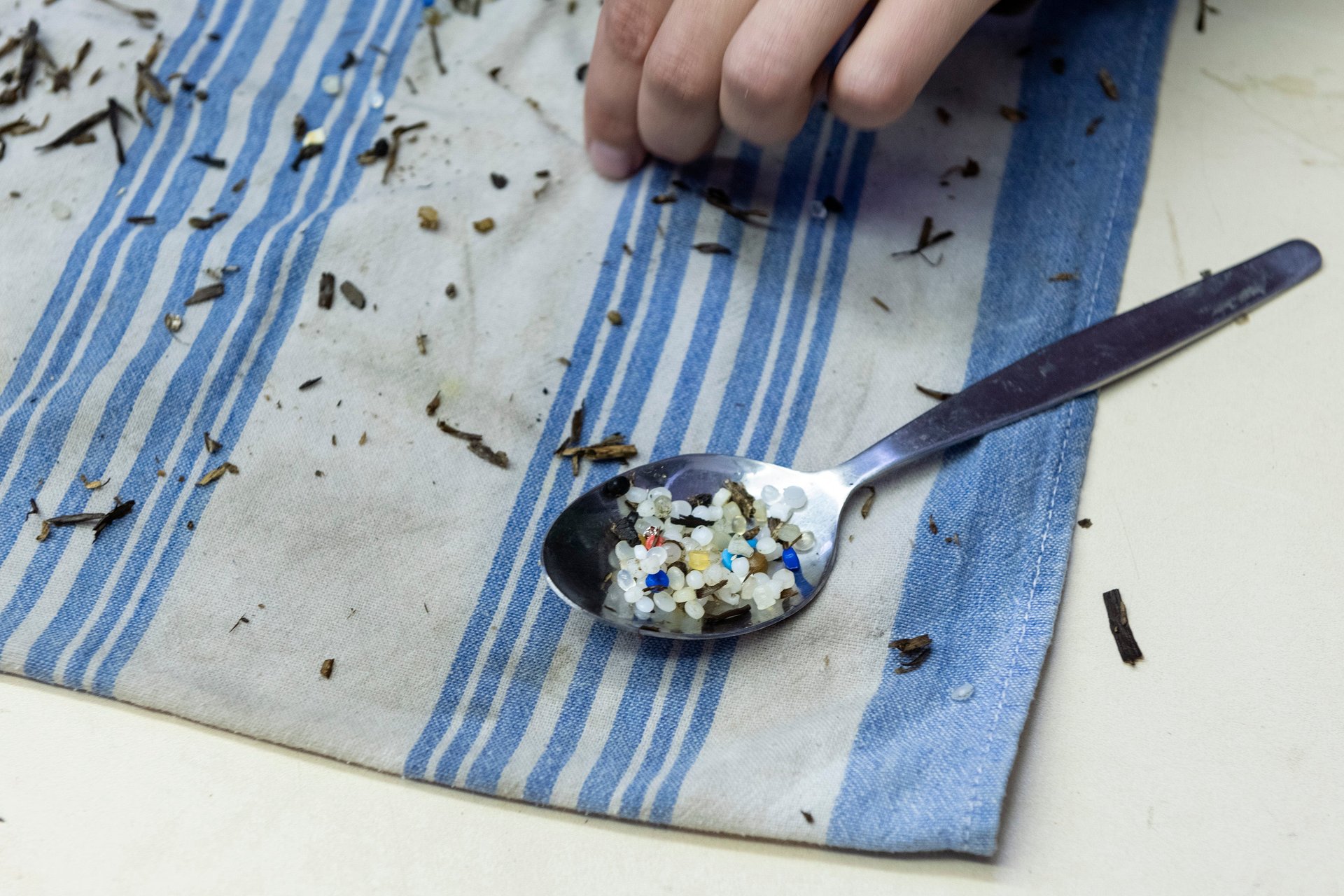Europe is importing fracked gas from the US to make new plastic
The river Scheldt winds through northern France, crosses through western Belgium, and then turns abruptly west to nick the southwestern edge of the Netherlands. From there, it travels on to disgorge itself in the North Sea. During its dalliance in Belgium it cuts straight through the city of Antwerp, whose great port was carved from its banks.
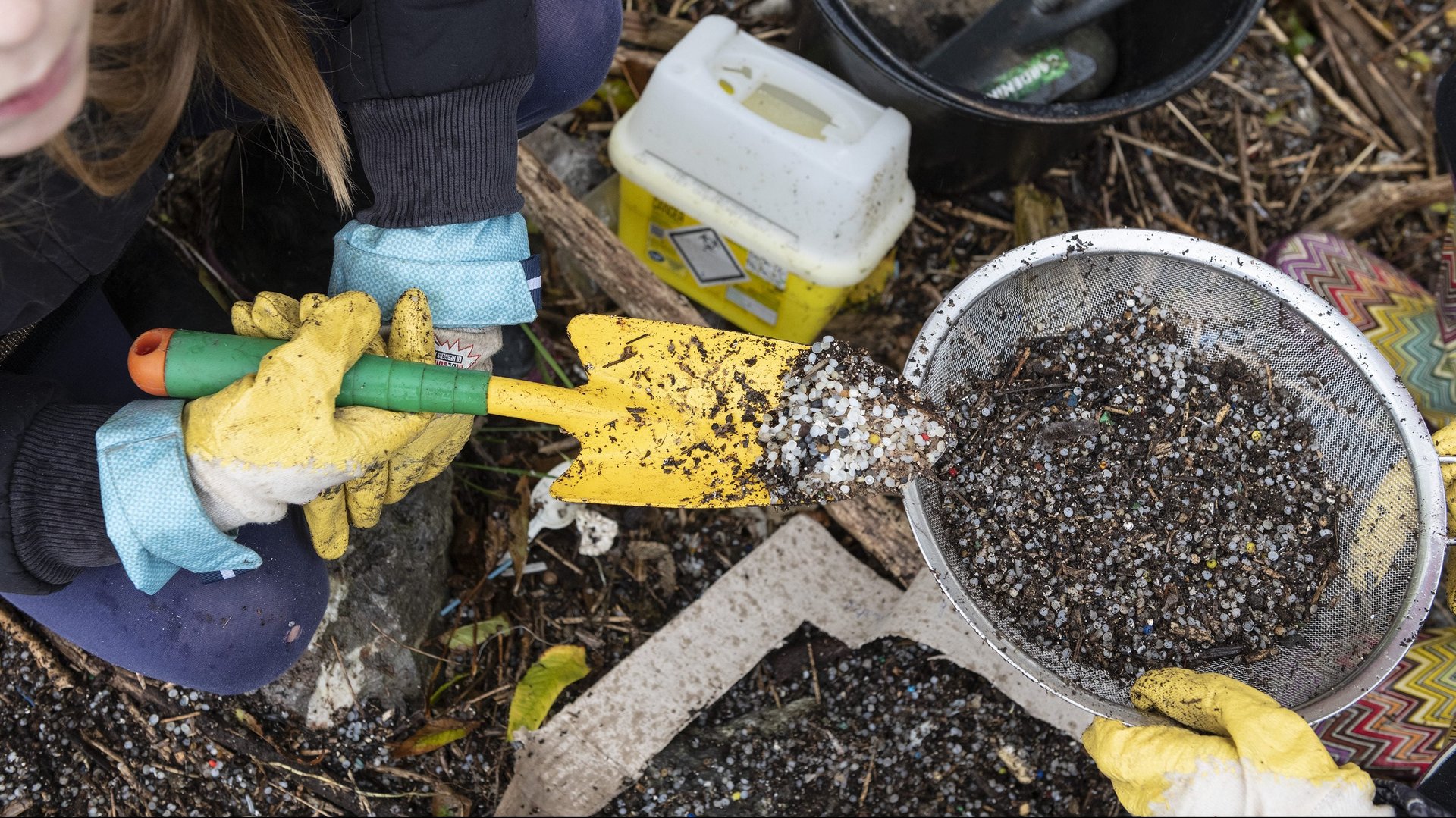

The river Scheldt winds through northern France, crosses through western Belgium, and then turns abruptly west to nick the southwestern edge of the Netherlands. From there, it travels on to disgorge itself in the North Sea. During its dalliance in Belgium it cuts straight through the city of Antwerp, whose great port was carved from its banks.
That’s where, if you look, you’ll find the strangest type of confetti, the oddest dusting of multi-colored snow: All along the river Scheldt near the port of Antwerp, it snows plastic pellets all year long.
Before plastic turns into the objects that fill our lives, it is born into the world as tiny spherical pre-production pellets, called “nurdles.” The lentil-sized pellets are light enough to be blown by wind, and round enough to easily roll away. They are the second-biggest contributor to microplastics in the environment, second only to the plastic microfibers shed from washing polyester clothing.
Antwerp is the world’s biggest petrochemical hub after Houston, Texas. And in the city’s industrial port, where companies like BASF and Exxon manufacture plastic along the shores of the Scheldt, nurdles are showing up on the coastline in great numbers.
On Sunday, November 3, a group of frustrated residents organized a hunt to try to put a number on just how many pellets were escaping to coat the beaches.
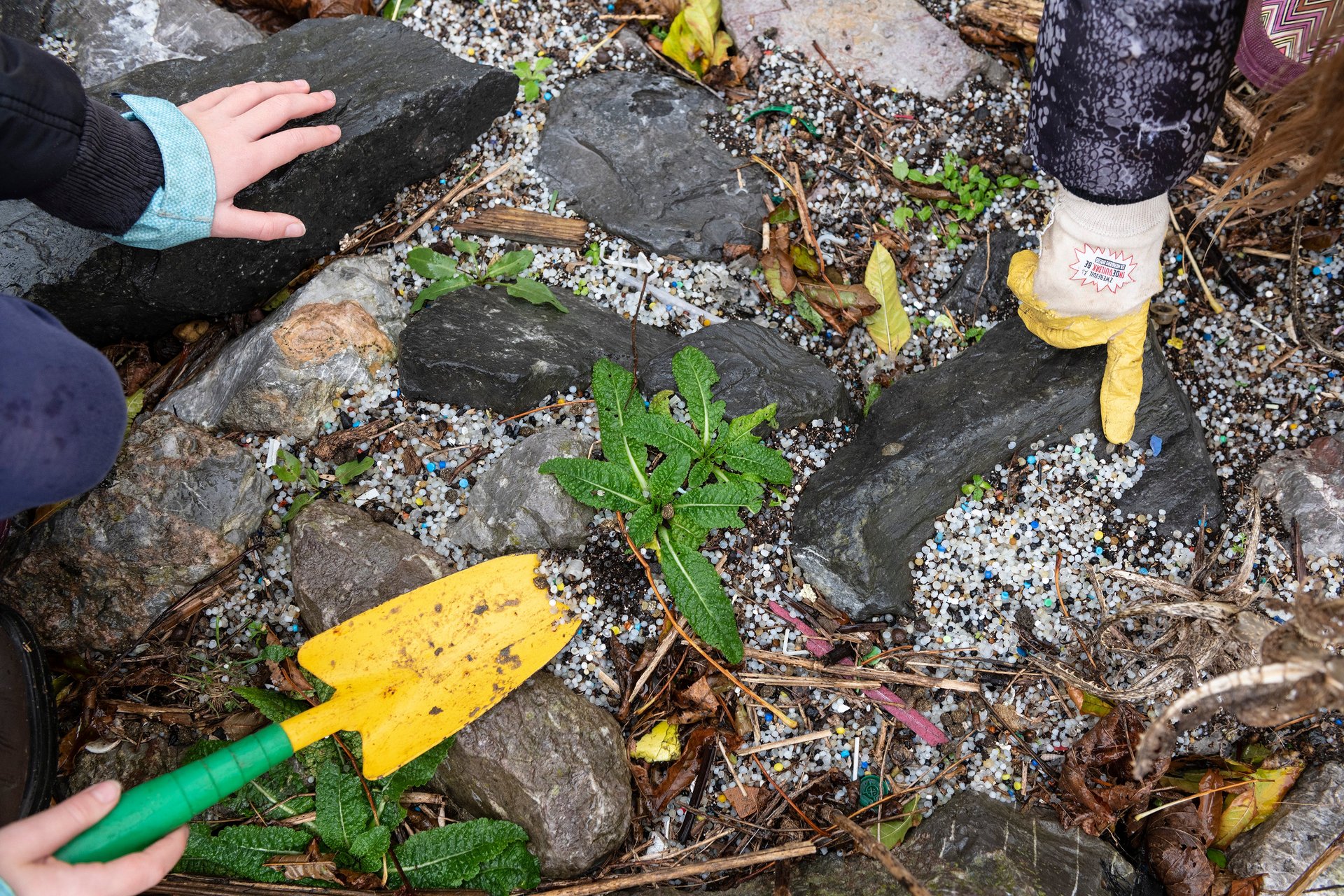
Nurdles can accidentally leave a production line in a variety of ways. Manufacturers often move them by way of pneumatic hoses, which vacuum up pellets and disgorge them into train cars for shipping. The points where those hoses connect to the cars is one place where pellets are known to spill.
“It’s beyond imagination,” says Pieter Lievens, a university professor who teaches a course at Karel de Grote Hogeschool Antwerp called “Global Problems.” He’d heard about the plastic pellets showing up in the port and littering the nearby estuary, and, several months ago, went to see for himself. The visit changed everything for him. “It influenced my understanding of this completely. It was thick with nurdles. It was shocking.”
With the looming plans for a large new plastic plant in Antwerp, it was likely to get worse. Earlier this year, Ineos, the biggest petrochemical producer in Europe, submitted plans to Belgium to build a 3-billion-euro plastic production facility in the port of Antwerp, adjacent to a nature reserve, and in the place where a young forest stands now. The plant would produce around 750,000 tons of plastic a year, all of it likely in the form of nurdles and powders.
Ineos has not said where it plans to sell its plastic. (It did not respond to a request for comment in time for publication.) But in general, 40% of all plastic ever made is used for single-use packaging, raising questions about how the plans align with the EU’s broad single-use plastic ban, just passed this year.
Ineos is also moving ahead with plans to dramatically expand its existing plastic plants in Norway and Scotland to 1 million tons each—combined, an addition of about 1 million tons of plastic-making capacity. Regardless of where it’s sold, that infrastructure will lock in a massive expansion of cheap plastic for decades.
Cargo ships full of shale gas
This spring, Lievens and other Antwerp residents formed a group called “Antwerp Shale Free,” and joined with other regional environmental groups to organize nurdle hunts, write petitions, and file hundreds of comments to the local government to object to Ineos’ permit application.
The expansion felt like an act of hypocrisy, Lievens said: Why was Belgium about to start making more plastic, when the EU had just acknowledged the need to make less? And what about the greenhouse gases produced by refining raw material into plastic?
The answer comes down to the manufacturing process itself. Virtually all plastic is made from oil and gas. And more than half of all plastic ever created was produced in the last 15 years, right around the same time that the US entered its fracking boom, newly able to extract hard-to-reach shale gas. Prices for that gas have collapsed as American shale fields produce more than anyone wants to buy.
As a way to use that overabundance, the petrochemical industry is pivoting more of its resources towards making plastic. The US is in the midst of permitting and building more than 300 new plastic plants, contributing to a projected tripling of global plastic production by 2050.
Until recently, those dynamics had little to do with Europe, which has some of the most progressive plastic rules around. Already, several EU countries require that the packaging industry pay to recycle plastic waste from its products. The EU’s ban of several types of single-use plastic is set to kick in by 2021. Europe, with its relatively low supply of native natural gas, mostly makes plastic out of oil, and not that much of it.
But that’s about to change as Ineos moves ahead with its permits for the Antwerp plant, as well as its expansion of existing plastic plants in Norway and Scotland.
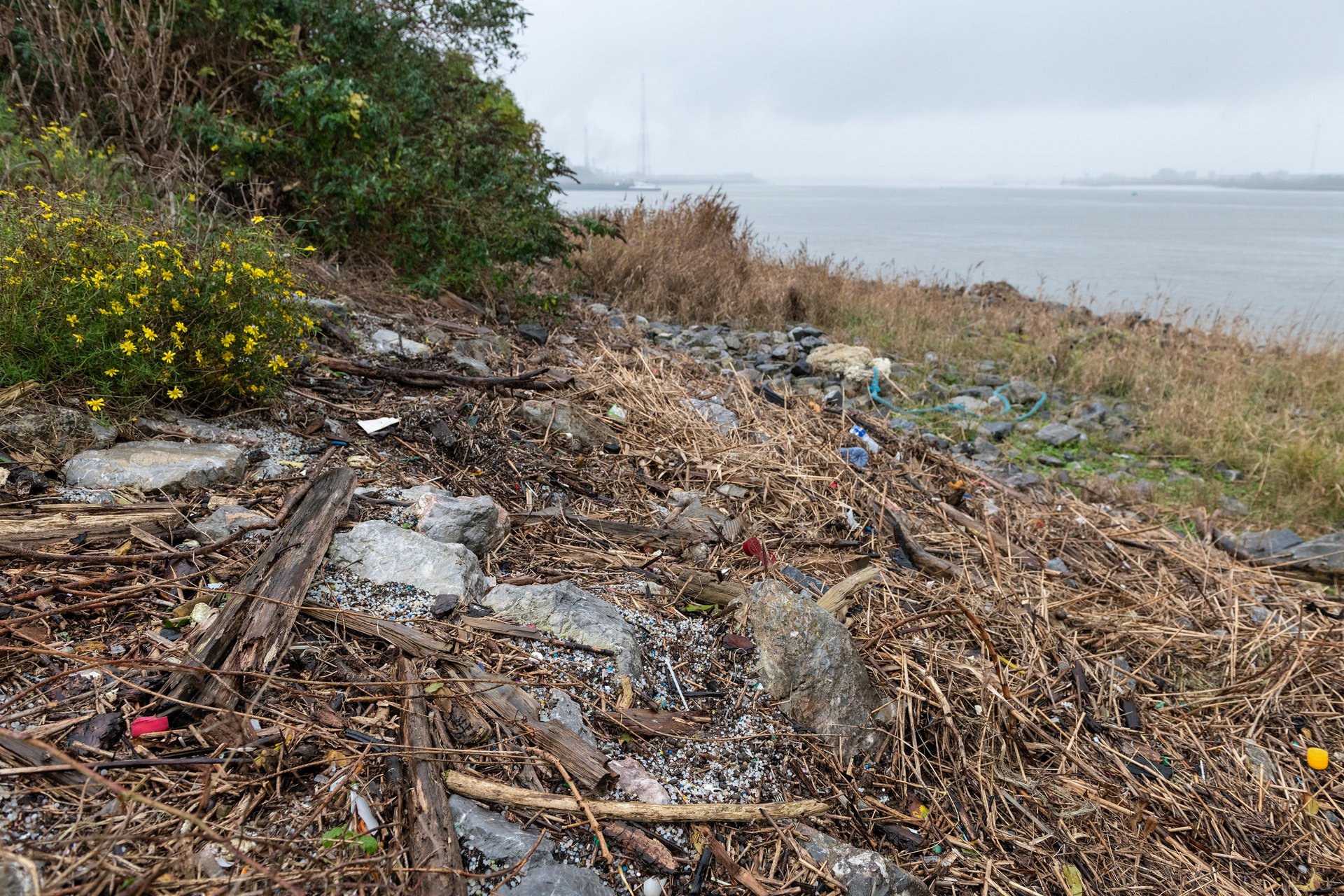
Fredric Bauer, an energy researcher at Lund University in Sweden, says the fracking boom in the US has changed the way European plastic plants operate. Producers are using more and more ethane from natural gas, instead of naptha from oil, because the ethane “is currently dirt cheap.” The UK this month banned fracking, leaving the US as the biggest potential source of ethane going forward.
US natural gas is now so cheap that a European company is even willing to ship it across the ocean. Until now, imports of American natural gas didn’t make much sense; it couldn’t beat prices from Russia, where Europe gets most of the natural gas it uses for heat and fuel, via pipeline. But in 2016, Ineos became the first company to bring liquefied natural gas from shale fields in Pennsylvania—a particularly climate-intensive form of fuel—to Europe.
It built a fleet of specially-designed ships, one of which was emblazoned with “SHALE GAS FOR PROGRESS” along its length. The ships picked up liquified shale gas from the Mariner East, a Sunoco-owned pipeline that connects fracking fields near Pittsburgh to a port near Philadelphia. The pipeline has been the subject of a criminal probe for causing sinkholes and water contamination locally.
The plastic plant running on those shipments will be similar to the massive plant Shell is building in Pennsylvania; both are “ethane crackers,” or facilities that are built to turn ethane, a byproduct of natural gas extraction, into ethylene, a building block for the most commonly-used form of plastic. And in fact, both plants will run on the very same source of ethane.
Now, pending the completion of the Mariner East 2, a much-contested addition to the pipeline system, Ineos plans to buy a lot more fracked gas from the US to fuel its new plastic operations. For the first time, on a large scale, fracking in the US—with all its climate change-inducing emissions—will be connected to Europe.
Plastic’s climate calculus
The Ineos plant, if approved, would be the second major plastic plant built in the port of Antwerp this year. Last month, petrochemical company Borealis AG, Europe’s second largest producer of plastics, broke ground on a plastic plant that intends to make nearly a million tons of propylene, a plastic feedstock, per year.
At every stage in its life, this plastic will add to Belgium’s carbon footprint, which currently stands at 104 million metric tons of carbon a year. Combined, the two new plants could add 10 million tons of greenhouse gases, Lievens says—increasing Belgium’s carbon footprint by roughly 10%. That figure accounts for the emissions of every stage of plastic’s lifecycle, from fracking in Pennsylvania, to refining in Belgium, to degrading around the world (plastic waste subjected to the elements continues to emit greenhouse gases, and the practice of incinerating plastic waste produces emissions too).
No official calculation of the country’s emissions would likely incorporate that complete life cycle. “Authorities are trying to turn a blind eye to the emissions coming from the US when they’re talking about these projects,” says Andy Gheorghiu, a campaigner for Food & Water Watch in Europe, an environmental group that has taken on opposing the Antwerp plant as one of its campaigns. “If you’re not paying attention to the full life cycle,” he says, “your assessment is flawed.”
If they did count those emissions, says Lievens, “it is in no way possible to keep Belgium in line with the Paris Agreement on climate change and build this infrastructure,” which aims to limit global temperature increase to 1.5 degrees Celsius above pre-industrial levels. The lifespan of an ethane cracker plant is 30 or 40 years, and, much like an oil refinery, they must be continually processing material to function properly. “This will lock Belgium into fossil fuel dependency,” Gheorghiu says.
It is important to remember, Bauer says, that most new plastic projects are located outside of Europe. China, the US, and the Middle East are planning to make a lot more virgin plastic in the coming years than Europe is. Ineos itself is investing $2 billion to build new petrochemical plants in Saudi Arabia, which will produce plastic products among other chemicals. Still, the uptick in Belgium is notable, given Europe’s positioning as climate and environment-forward in its policies.
Where the plastic from the Antwerp plant will go is still a question: In general, 40% of all plastic produced is used for single-use packaging. The EU’s single-use plastic ban is not absolute; there are still disposable items, particularly for packaging, that still are permitted to be made of plastic. But outside of Europe, single-use plastic demand is rising.
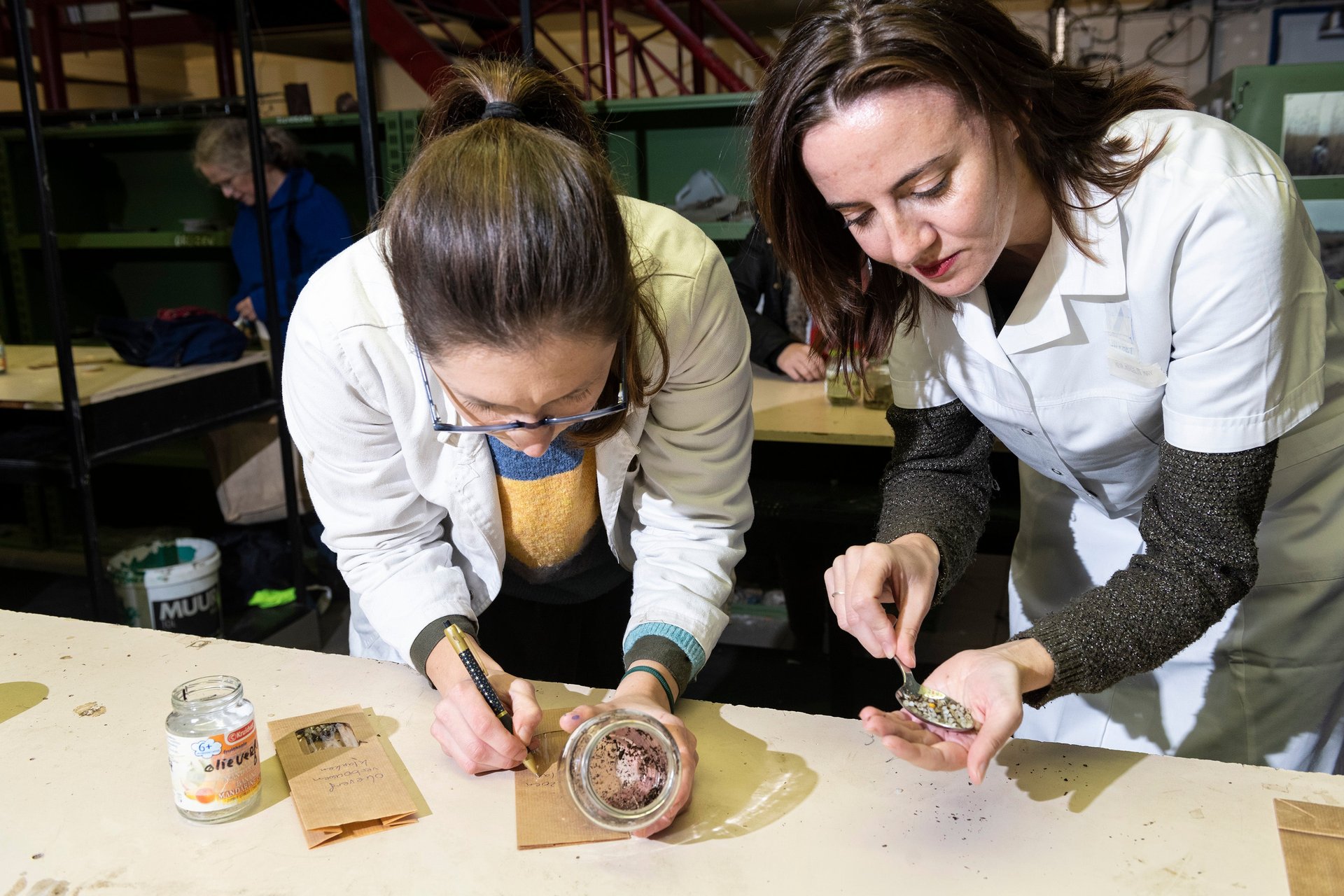
For now, Antwerp residents are gathering periodically for these nurdle hunts, sifting through the beach to try to collect and count the influx of plastic pellets that are turning up in large numbers.
On November 3, after sifting through packets of sand collected from various points along the river, Thomas Goorden, Lara Svoboda, Evy De Vos, and Magda Theuns, all members of the Antwerp Shale Free group, input the data in a spreadsheet. They wanted to show how widespread the pollution is.
Two residents, Inge de Groot and Daniel Siepman, have made it a habit to come to a beach on Zeeland island on the river Scheldt, to sift sand with homemade screens, picking up as many nurdles as they can. The site is near a protected breeding area for birds. “This is supposed to be a bird paradise,” Inge de Groot told journalist Hine Tens of Belgian paper Mondiaal Nieuws. “This is probably the first thing such a bird would pick up when it breaks out of its egg.”
de Groot drops to her knees and begins sifting. But it’s a hopeless task; the nurdles keep rolling out of the production facilities, blown by wind or spilled during transport, rendering Antwerp identical to beaches all over the world covered in the tiny pellets.
